Matthias Blau
Institut für Hörtechnik und Audiologie, Jade Hochschule, Oldenburg, Germany, Cluster of Excellence Hearing4all
Soft-Constrained Spatially Selective Active Noise Control for Open-fitting Hearables
Jul 16, 2025Abstract:Recent advances in spatially selective active noise control (SSANC) using multiple microphones have enabled hearables to suppress undesired noise while preserving desired speech from a specific direction. Aiming to achieve minimal speech distortion, a hard constraint has been used in previous work in the optimization problem to compute the control filter. In this work, we propose a soft-constrained SSANC system that uses a frequency-independent parameter to trade off between speech distortion and noise reduction. We derive both time- and frequency-domain formulations, and show that conventional active noise control and hard-constrained SSANC represent two limiting cases of the proposed design. We evaluate the system through simulations using a pair of open-fitting hearables in an anechoic environment with one speech source and two noise sources. The simulation results validate the theoretical derivations and demonstrate that for a broad range of the trade-off parameter, the signal-to-noise ratio and the speech quality and intelligibility in terms of PESQ and ESTOI can be substantially improved compared to the hard-constrained design.
Time-Variant Overlap-Add in Partitions
Sep 30, 2023Abstract:Virtual and augmented realities are increasingly popular tools in many domains such as architecture, production, training and education, (psycho)therapy, gaming, and others. For a convincing rendering of sound in virtual and augmented environments, audio signals must be convolved in real-time with impulse responses that change from one moment in time to another. Key requirements for the implementation of such time-variant real-time convolution algorithms are short latencies, moderate computational cost and memory footprint, and no perceptible switching artifacts. In this engineering report, we introduce a partitioned convolution algorithm that is able to quickly switch between impulse responses without introducing perceptible artifacts, while maintaining a constant computational load and low memory usage. Implementations in several popular programming languages are freely available via GitHub.
Using a one-dimensional finite-element approximation of Webster's horn equation to estimate individual ear canal acoustic transfer from input impedances
Apr 14, 2023



Abstract:In many applications, knowledge of the sound pressure transfer to the eardrum is important. The transfer is highly influenced by the shape of the ear canal and its acoustic properties, such as the acoustic impedance at the eardrum. Invasive procedures to measure the sound pressure at the eardrum are usually elaborate or costly. In this work, we propose a numerical method to estimate the transfer impedance at the eardrum given only input impedance measurements at the ear canal entrance by using one-dimensional first-order finite elements and Nelder-Mead optimization algorithm. Estimations on the area function of the ear canal and the acoustic impedance at the eardrum are achieved. Results are validated through numerical simulations on ten different ear canal geometries and three different acoustic impedances at the eardrum using synthetically generated data from three-dimensional finite element simulations.
Optimization of a Fixed Virtual Sensing Feedback ANC Controller for In-Ear Headphones with Multiple Loudspeakers
Oct 07, 2021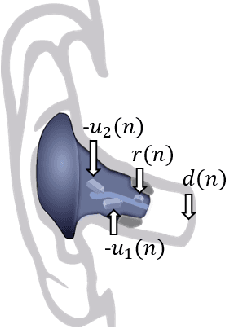
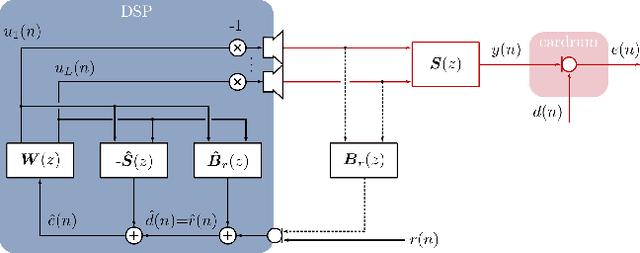
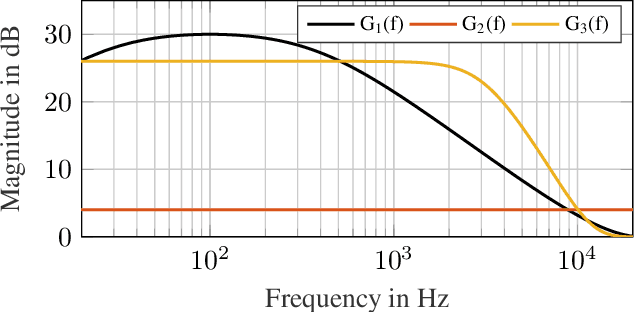
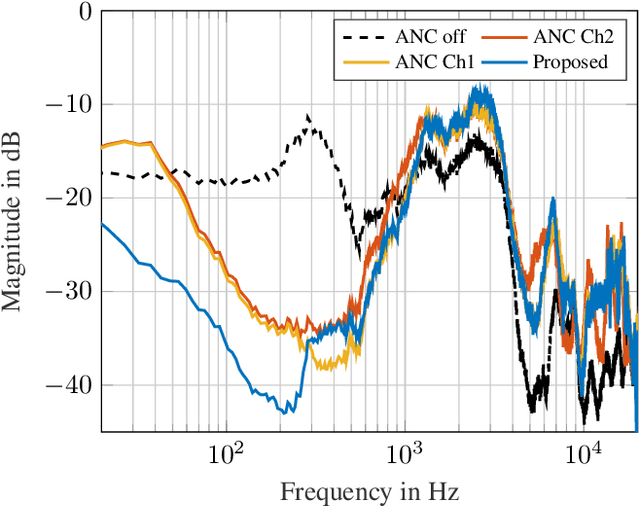
Abstract:In this paper we consider an in-ear headphone equipped with an inner microphone and multiple loudspeakers and we propose an optimization procedure with a convex objective function to derive a fixed multi-loudspeaker ANC controller aiming at minimizing the sound pressure at the ear drum. Based on the virtual microphone arrangement (VMA) technique and measured acoustic paths between the loudspeakers and the ear drum, the FIR filters of the ANC controller are jointly optimized to minimize the power spectral density at the ear drum, subject to design and stability constraints. For an in-ear headphone with two loudspeakers, the proposed multi-loudspeaker VMA controller is compared to two single-loudspeaker VMA controllers. Simulation results with diffuse noise show that the multi-loudspeaker VMA controller effectively improves the attenuation by up to about 10 dB for frequencies below 300 Hz when compared to both single-loudspeaker VMA controllers.
Individualized sound pressure equalization in hearing devices exploiting an electro-acoustic model
Oct 04, 2021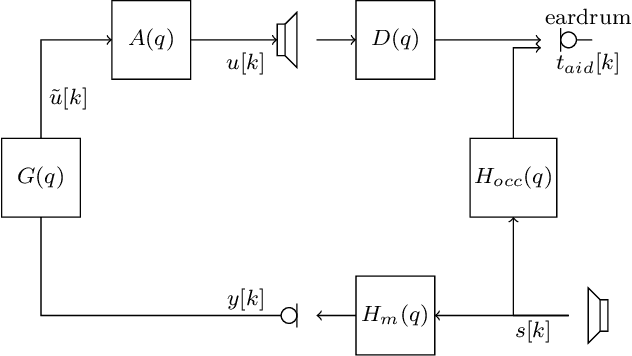
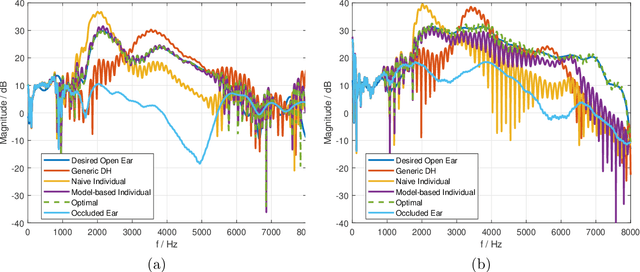
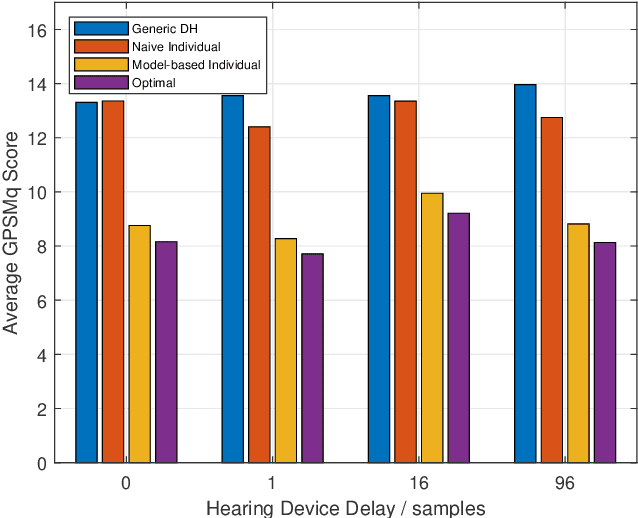
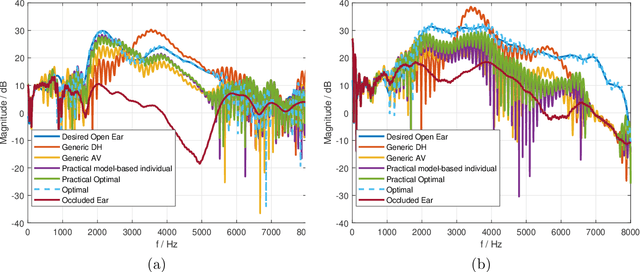
Abstract:To improve sound quality in hearing devices, the hearing device output should be appropriately equalized. To achieve optimal individualized equalization typically requires knowledge of all transfer functions between the source, the hearing device, and the individual eardrum. However, in practice the measurement of all of these transfer functions is not feasible. This study investigates sound pressure equalization using different transfer function estimates. Specifically, an electro-acoustic model is used to predict the sound pressure at the individual eardrum, and average estimates are used to predict the remaining transfer functions. Experimental results show that using these assumptions a practically feasible and close-to-optimal individualized sound pressure equalization can be achieved.
Sound Pressure Minimization at the Ear Drum for In-ear ANC Headphones using a Fixed Feedforward Remote Microphone Technique
May 14, 2021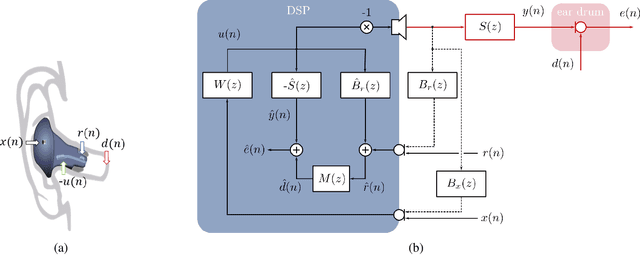
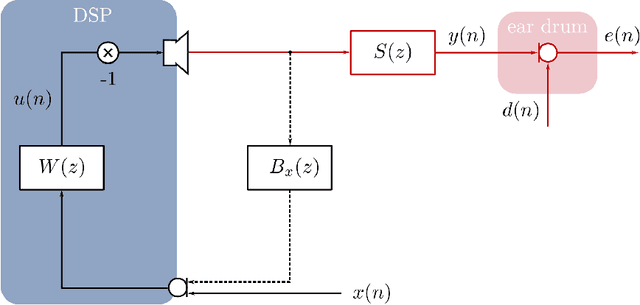
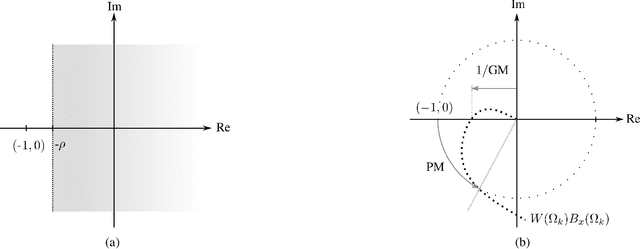
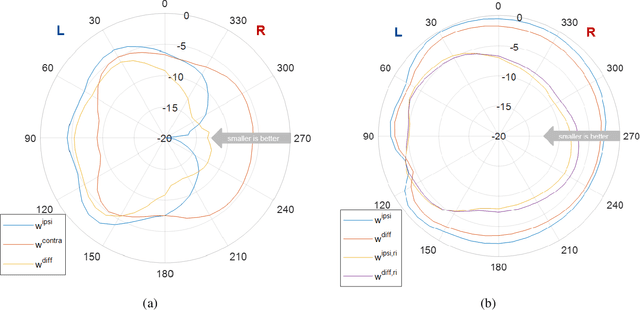
Abstract:In this paper we consider an in-ear headphone equipped with an external microphone and aim to minimize the sound pressure at the ear drum by means of a fixed feedforward ANC controller. Based on measured acoustic paths to predict the sound pressure generated by external sources and the headphone at the ear drum, the FIR filter coefficients of the ANC controller are optimized for different sound fields. Due to the acoustic feedback path between the loudspeaker and the microphone, a stability constraint based on the Nyquist stability criterion is introduced. Performance degradations due to reinsertions of the headphone and intra-subject variations are addressed by simultaneously optimizing the controller for several measurement repetitions of the acoustic paths. Simulations show that the controller optimized for an ipsilateral excitation produces an attenuation of at least -10 dB that extends approximately to +45{\deg} and -65{\deg} from the ipsilateral DoA. The controller optimized for a diffuse-field excitation achieves an attenuation of at least -10 dB over a wider range of DoAs on the ipsilateral side, namely +90{\deg} to -90{\deg}. Optimizing the controller for several measurement repetitions is shown to be effective against performance degradations due to reinsertions and intra-subject variations.
 Add to Chrome
Add to Chrome Add to Firefox
Add to Firefox Add to Edge
Add to Edge